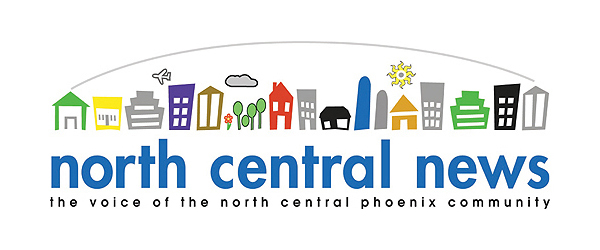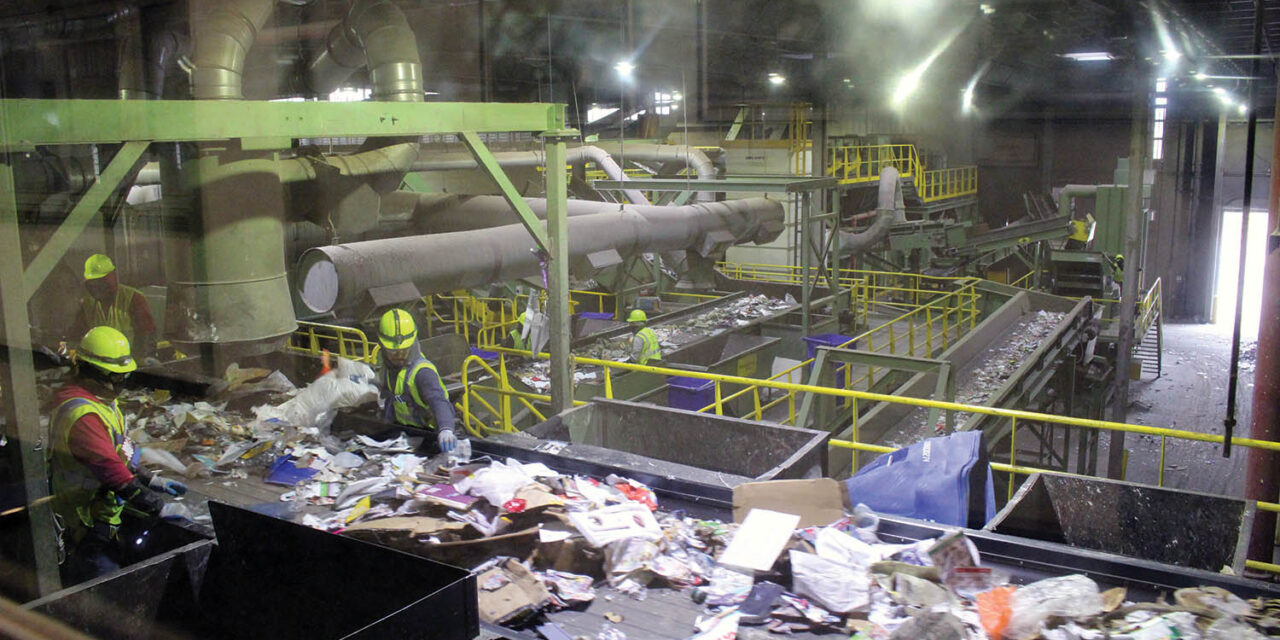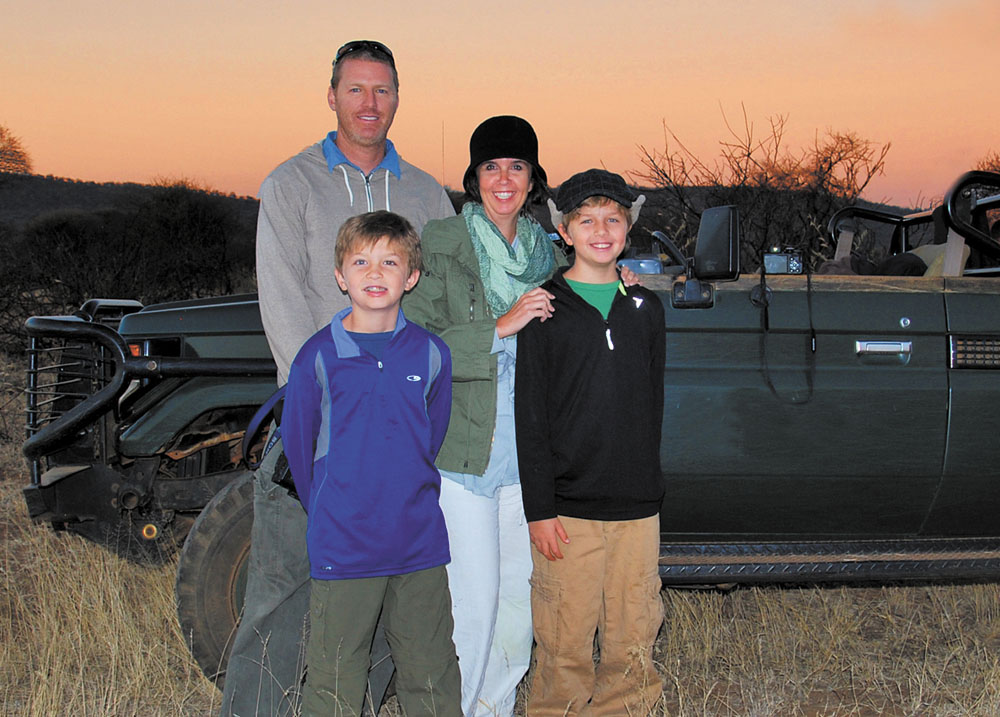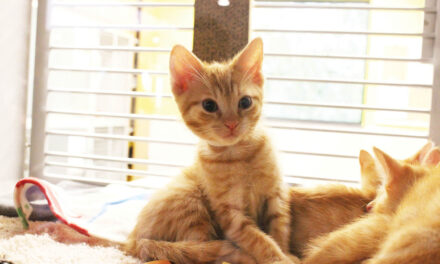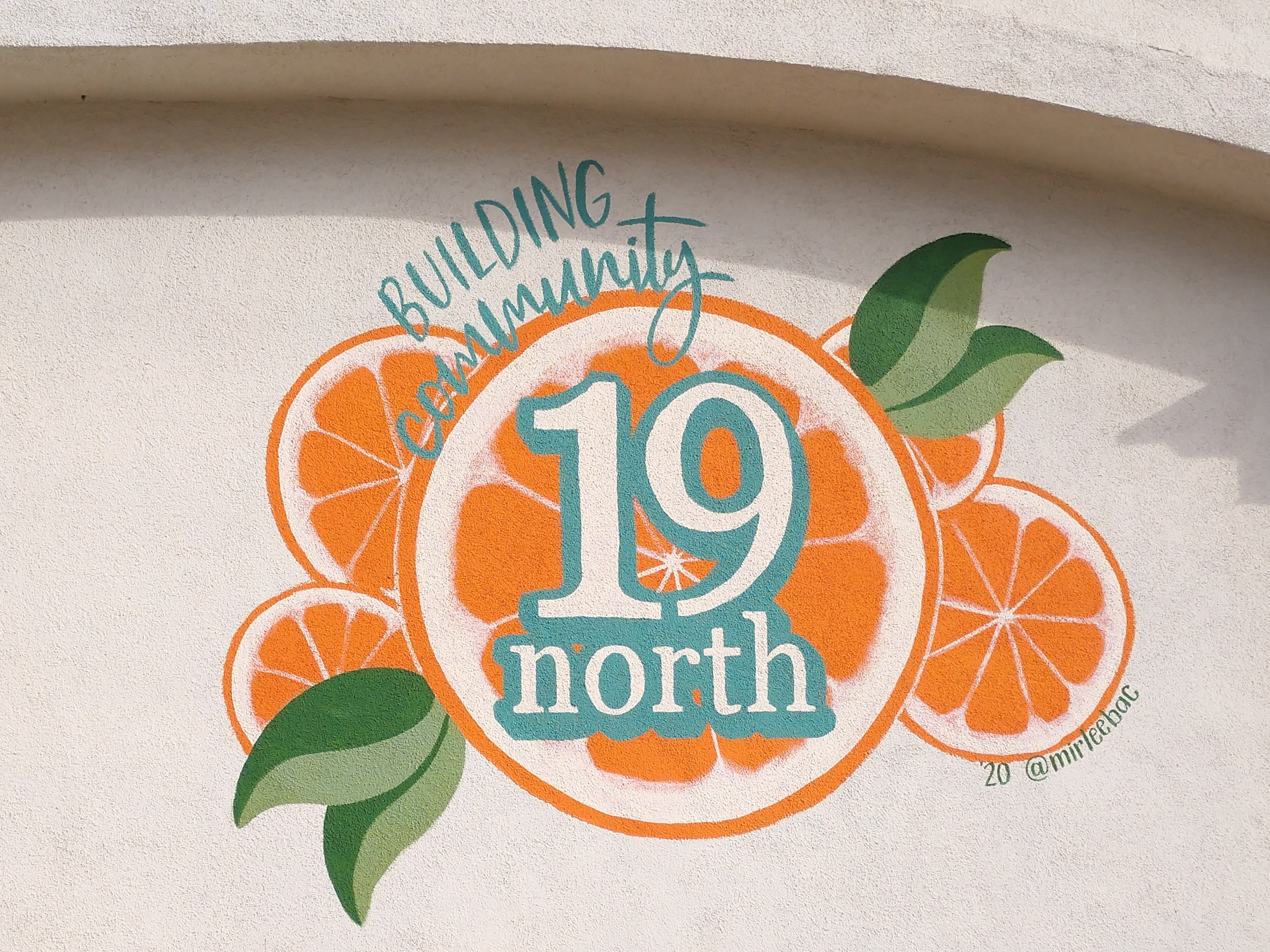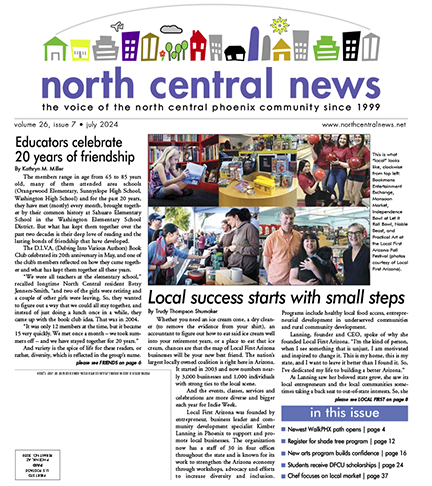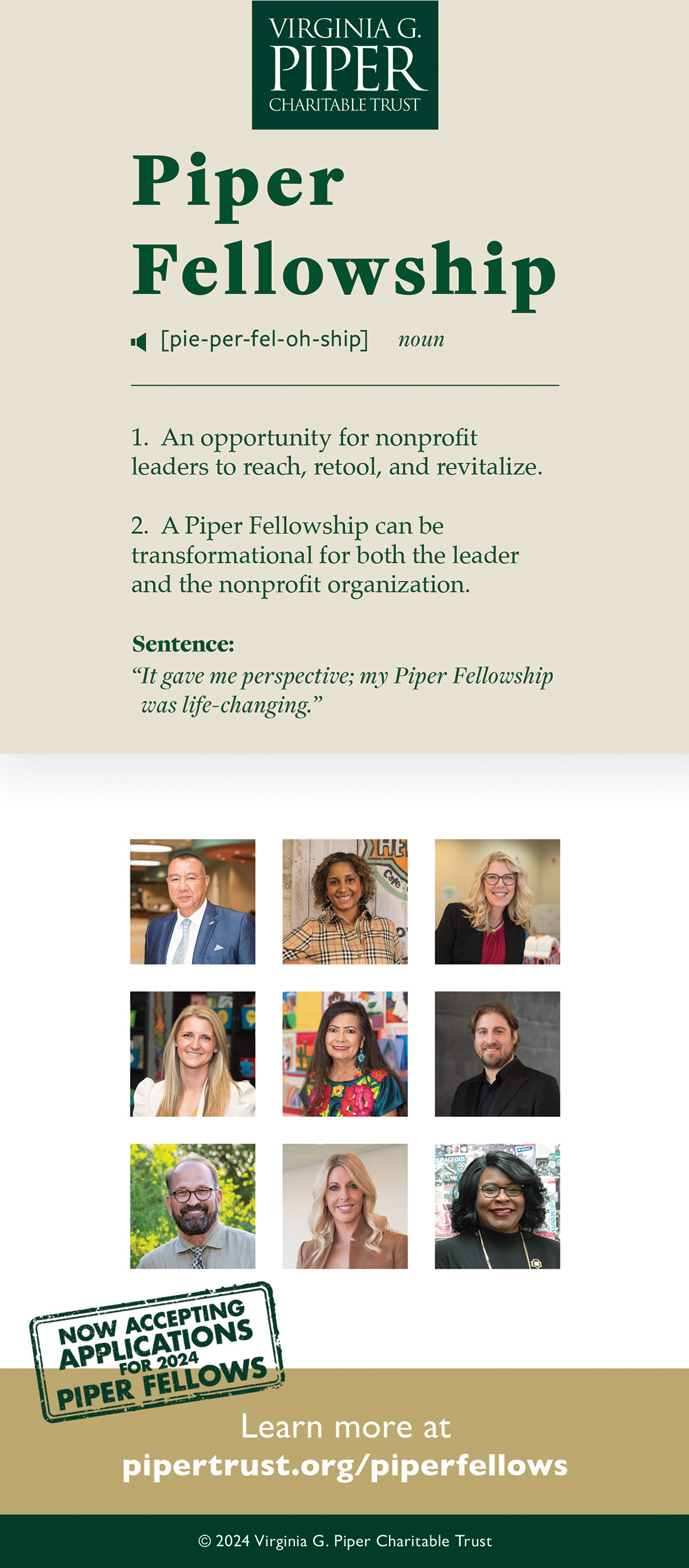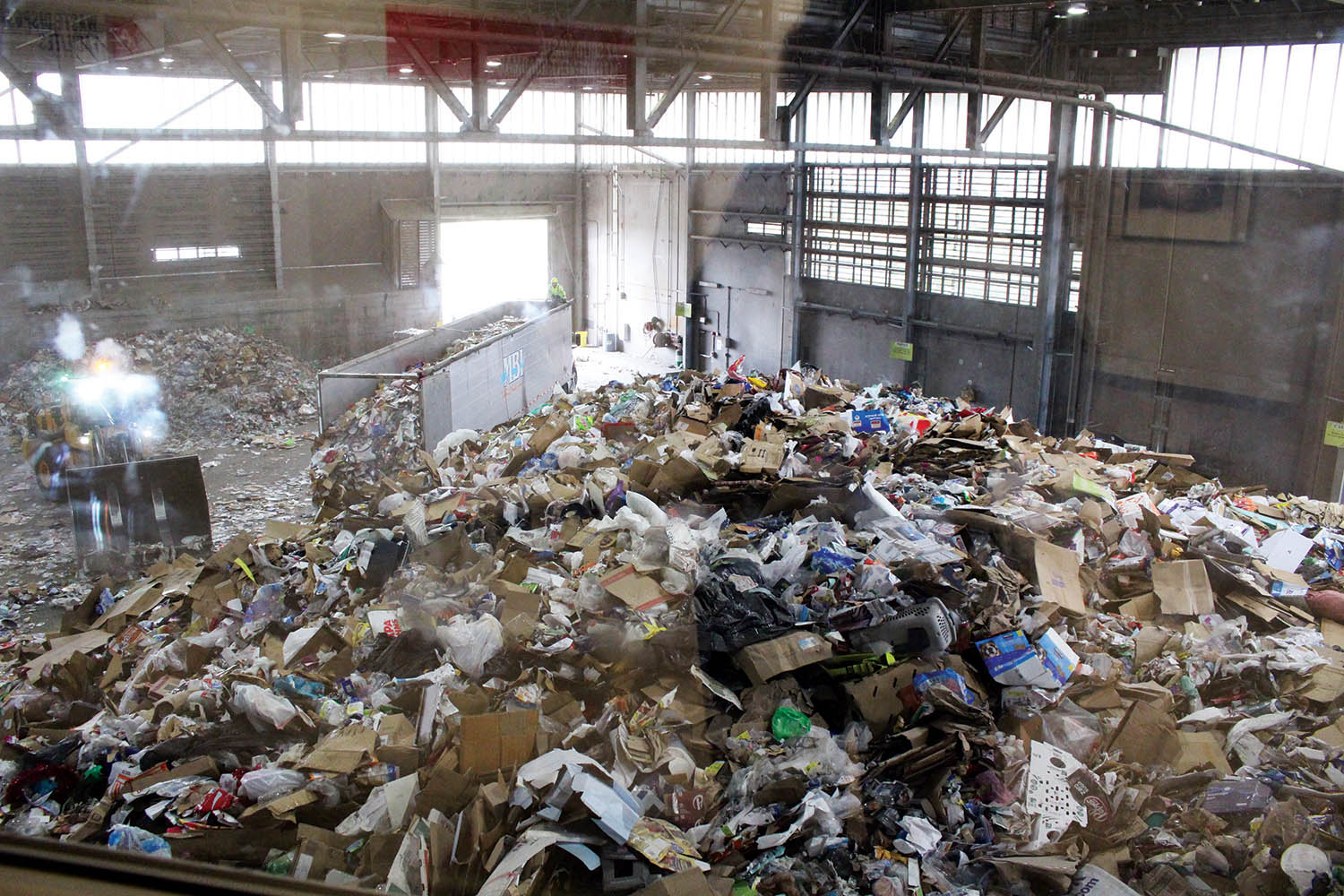
The tip floor is the first stop for recyclables at the City of Phoenix Materials Recovery Facility (photo by Kathryn M. Miller).
A visit to the City of Phoenix Materials Recovery Facility is like watching a staged ballet. An unlikely comparison, perhaps, but the busy facility where recyclables are sorted offers its own kind of beautifully choreographed performance.
Each year, more than 120,000 tons of recycling comes through the facility, says Alexis Yaple, who is a Zero Waste coordinator with the city. After being picked up from residents’ blue bins, recyclables make their way to one of two facilities that handle the city’s trash and recycling. In this case, the North Transfer Station. Once there, the recycling journey begins on the tip floor, where items are dumped and then loaded onto a belt that feeds them into the recycling facility.
After being fed onto the belt, the single-stream system begins at the pre-sort line.
“This is probably the most important step in the process,” Yaple said, “because they’re trying to grab anything that could damage the equipment, tangle up in the equipment… if they see something really heavy coming through, they can stop the belts and then be able to pull it off the line.”
Anywhere from 20 to 30 percent of the material that arrives at the facility is what the city calls “contamination,” stuff that should not have been placed in the recycle bin in the first place. The pre-sort team works quickly to remove items before they get to the next step. The most frequently removed contaminants are plastic bags, which will get caught up in the equipment and cause stoppage. Other problem items that cause issues are bagged recyclables, electronics and furniture that are not recyclable at the facility, and batteries, which can cause fires.
The materials that are pulled off of the line or that don’t get captured by the equipment will go to the adjacent landfill side of the facility.
City trash collection trucks drop off trash at the transfer station, where it is then loaded onto semi trucks. Once those trucks reach 80,000 pounds, they will head to the city landfill, some 65 miles away in Buckeye.
If what the city calls “clean green” material (bulk green waste that is not mixed in with other materials) comes into the landfill side, it can be diverted to another aspect of waste management: compost. The city’s Southern Transfer Station at 27th Avenue and Lower Buckeye handles compost.
Walking through the recycling facility, Yaple points out that throughout the process, employees are doing quality control.
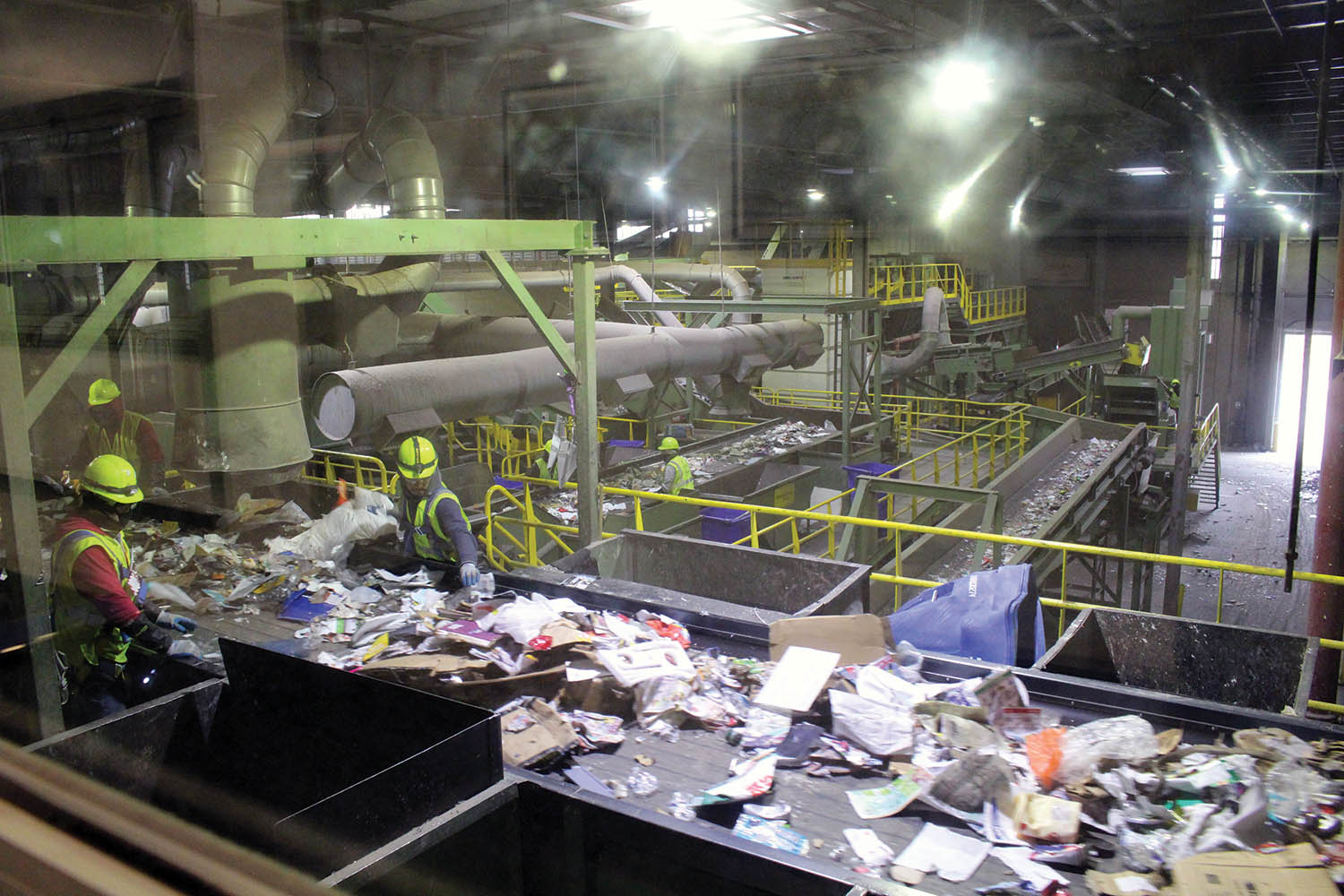
Employees at the pre-sort line remove anything that is not recyclable or that may damage the or get tangled in the sorting equipment (photo by Kathryn M. Miller).
“They’re pulling out stuff that shouldn’t have been placed in the bin or maybe materials that ended up on the wrong belt and they’ll help resort it. But the machines do the bulk of the actual sortation.
“We’ve got the cardboard screens, the paper screens, for metal, we have a magnetic belt that pulls out the steel cans, for aluminum, there’s a machine called an Eddy Current and it produces an alternating electromagnetic current that aluminum is repelled by. So, as soon as it hits that current, it jumps over to its own conveyor belt. And then we have what’s known as an optical sorter, which uses cameras and computer and air to project plastics over to their own conveyor belt.”
Choreography, indeed.
While the city owns the facility and equipment, the operation itself is contracted out to Balcones. Once items are sorted and bailed, the company handles the brokering of the various commodities, which are sold to different companies and then turned back into new products.
The city says that while about 90 percent of Phoenix households do recycle, it wants to raise the bar for landfill diversion.
“We are about to roll out our Zero Waste Plan,” Yaple said. “It will be our guide for how we are going to get to our zero-waste goal by 2050. We also have an intermediate goal of 50 percent diversion by the year 2030.”
For the city, “zero waste” means that 90 percent of materials are pulled away from the landfill stream and either recycled, composted, donated or reused in some way, sending only 10 percent or less of waste to the landfill. Currently, the city’s diversion rate is at 36 percent. So, the 90 percent of residents who do recycle, can help by focusing on how well they recycle. But some may still ask, why is it important?
“Recycling is the most effective method of diverting waste from the landfill,” Public Works staff said. “The more waste we divert, the longer the current landfill lasts, and the longer it will be before the City will have to identify a new place to build a new landfill.
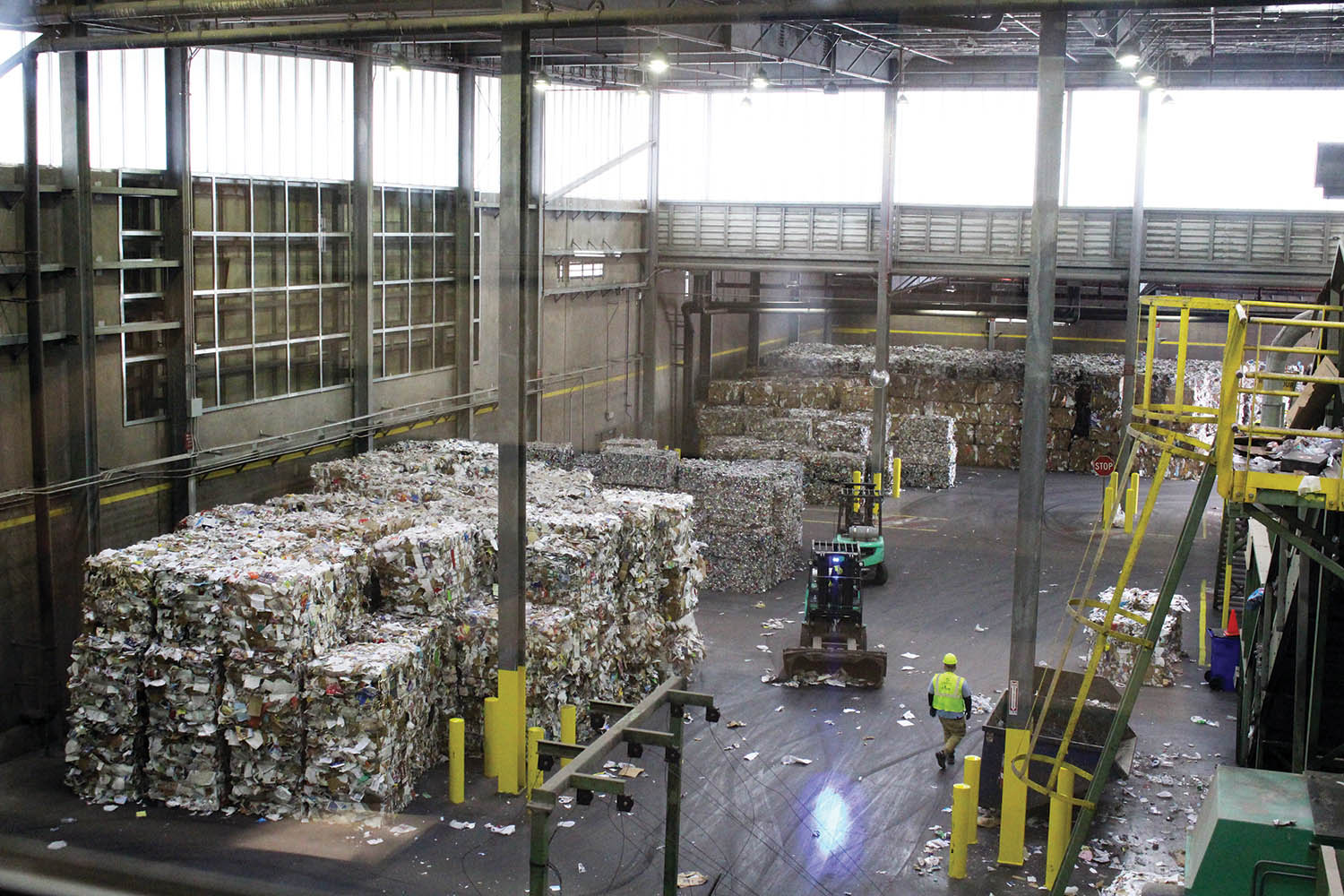
Sorted and bailed materials are ready for the next leg of their journey (photo by Kathryn M. Miller).
“On the whole, the more we recycle, the less space we use on the planet for storing discarded items that will essentially never serve the human population again. A circular economy — the idea of bringing used materials back into the product stream without having to rely on virgin materials — is so important because it is more efficient in the short term and more sustainable in the long term.”
As the new Zero Waste 2050 plan rolls out, the city will seek input from residents, holding two open house events in each City Council district. The first of those open houses is scheduled for April 24 at 6 p.m. at the Deer Valley Community Center.
In the meantime, a wealth of information — from what to recycle, where to properly dispose of materials that shouldn’t go to the landfill, and how to reduce waste overall — can be found on the Zero Waste team’s Recycle+ webpage: www.phoenix.gov/publicworks/recycleplus.
